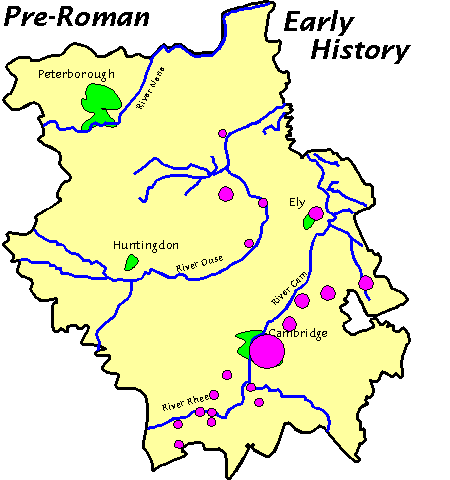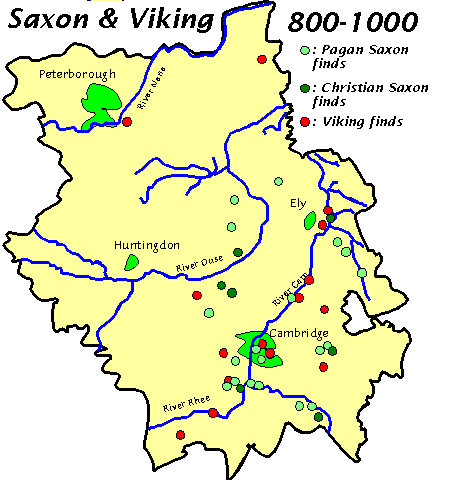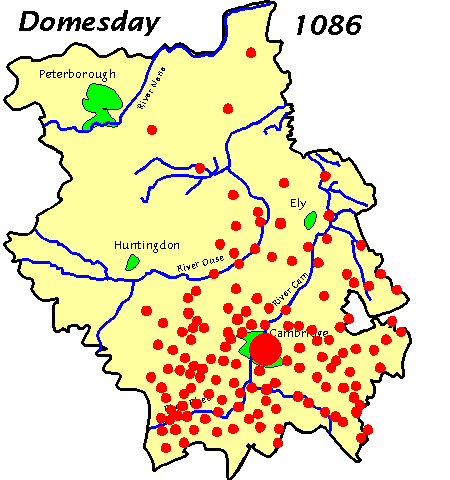The Victoria History of the County of Cambridge and the Isle of Ely published in 1938 gives an introduction to the settlements in Cambridgeshire during the Stone, Bronze and Iron Ages by J. Grahame Clark, in which he states that settlement was restricted almost exclusively to the river courses and their gravel soil, while in the same publication T.C. Lethbridge asserts that "It would be an exaggeration to say that there are no fields in Cambridgeshire without pieces of Samian pottery on them, but there are so many where it is present that the remark can hardly be called absurd", and thus the Roman occupation covered all of the dry ground of the river plains and the clay plateaus, and even extended into the outlying areas of the fens where drainage work could improve the land.

With the end of the Roman period, settlement returned to the old pattern which followed the rivers, and only when growth demanded more space did settlement spread back onto the chalk hills. However, during the Viking period the Saxon system of landholding and tenure in the South, the Viking ways of the Danelaw combined to induce heavier use of the marginal land, and the clearance of forest to provide for more pasture and arable land. Combined with an increase in European trade, settlement appears to have been expansionary throughout the period of the ongoing strife over the borders of the Danelaw, and so perhaps the uncertainty and warfare, and the resulting damage to houses and crops, has been overplayed in this area.

As the map makes clear, the influence of the Danes was not restricted to a few outposts or some chance finds of single objects - instead, the archaeological picture is of an integrated society, with people from both backgrounds mixed together (or at the very least, a people who were at home using the cultural items of both cultures).
With the coming of the Normans, it is clear that settlement had been extended over almost all of the available area, as the Domesday Book records in some detail. The map below shows the villages and manors which appear in the Domesday records for Cambridgeshire - note that Huntingdonshire and Peterborough were recorded separately, and are not shown here.
